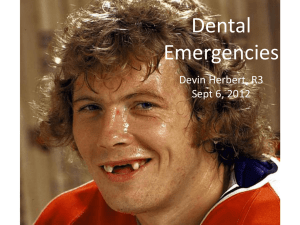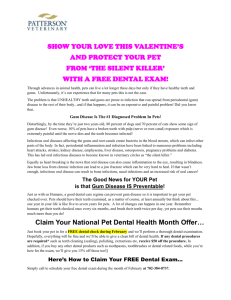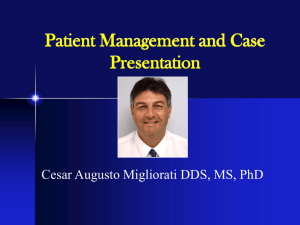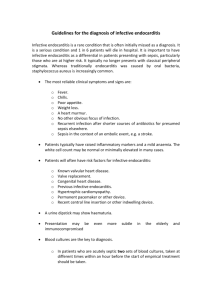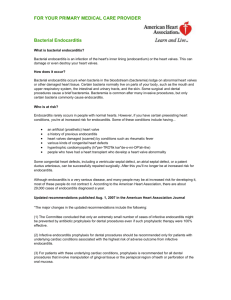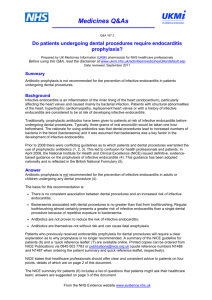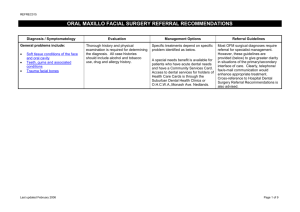The use of antibiotics in Williams Syndrome during Dental
advertisement
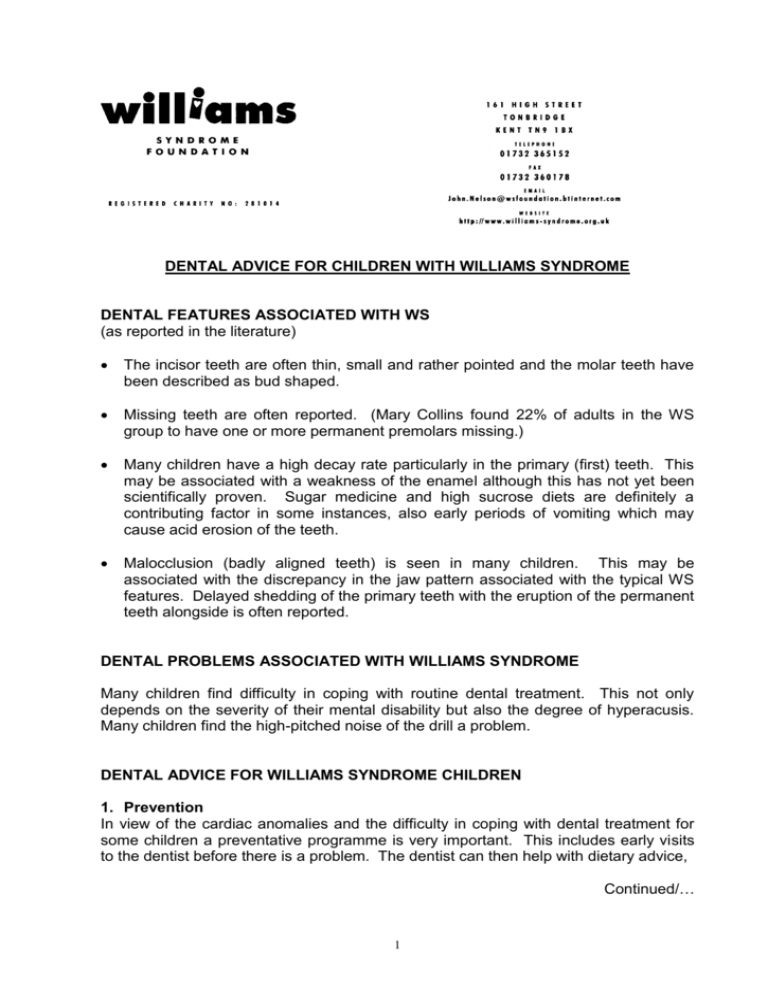
DENTAL ADVICE FOR CHILDREN WITH WILLIAMS SYNDROME DENTAL FEATURES ASSOCIATED WITH WS (as reported in the literature) The incisor teeth are often thin, small and rather pointed and the molar teeth have been described as bud shaped. Missing teeth are often reported. (Mary Collins found 22% of adults in the WS group to have one or more permanent premolars missing.) Many children have a high decay rate particularly in the primary (first) teeth. This may be associated with a weakness of the enamel although this has not yet been scientifically proven. Sugar medicine and high sucrose diets are definitely a contributing factor in some instances, also early periods of vomiting which may cause acid erosion of the teeth. Malocclusion (badly aligned teeth) is seen in many children. This may be associated with the discrepancy in the jaw pattern associated with the typical WS features. Delayed shedding of the primary teeth with the eruption of the permanent teeth alongside is often reported. DENTAL PROBLEMS ASSOCIATED WITH WILLIAMS SYNDROME Many children find difficulty in coping with routine dental treatment. This not only depends on the severity of their mental disability but also the degree of hyperacusis. Many children find the high-pitched noise of the drill a problem. DENTAL ADVICE FOR WILLIAMS SYNDROME CHILDREN 1. Prevention In view of the cardiac anomalies and the difficulty in coping with dental treatment for some children a preventative programme is very important. This includes early visits to the dentist before there is a problem. The dentist can then help with dietary advice, Continued/… 1 i.e. keep sugar food and drinks to a minimum and particularly avoid sugar snacks between meals. Advice on fluoride supplementation should also be sought from your dentist. If the child can cope, it is recommended that fissure sealant be placed on the permanent molars soon after eruption. Start brushing your baby's teeth as soon as they appear to accustom them to the procedure daily. Encourage your child to do the brushing him/herself but supervision is essential until at least 6-7 years and beyond. 2. Treatment If decay is present this should not be left untreated, particularly if there is a cardiac anomaly. Many children can cope with small fillings in the dental chair, but if holes are ignored they may give pain and become more complicated to treat. If the child cannot cope with routine care, then treatment under general anaesthesia is possible. However, referral to a local hospital is usually indicated. If no decay is present it is still important to attend your dentist regularly. This will ensure any new decay is picked up early. Gingivitis and periodontitis (gum disease) may occur if the brushing is not very efficient and your dentist can advise on this. To help with the noise problem, ear-plugs could be used - or possibly a Walkman, playing soothing music - but loud! ORTHODONTICS Crowding, displaced, crooked teeth can all be treated with a brace. This will depend very much on the severity of the problem and the ability of the child to cope. However, many WS children manage very well and very good results are achieved. In some cases, where permanent teeth erupt alongside the primary teeth, extraction of the primary teeth is indicated. If you wish to discuss any dental problems your child may be experiencing, please contact: Janice Fearne Department of Paediatric Dentistry The Royal London Hospital Dental Institute Turner Street Whitechapel London E1 2AD Tel: 0207 377 7000 Email: jfearne@mds.qmw.ac.uk 2 The use of antibiotics in Williams Syndrome during Dental Procedures and operations. New guidelines by NICE Infective endocarditis Infective endocarditis is an infection in which the lining of the heart, particularly the heart valves, becomes inflamed. It affects people who have certain heart problems such as a replacement valve or a condition called hypertrophic cardiomyopathy (see ‘Am I at risk of infective endocarditis?’ on page 5). It is caused mainly by bacteria, which get into the blood from outside the body. It is a very rare condition, but is serious. New recommendations In the past, people at risk of infective endocarditis have been offered antibiotics when they have certain medical or dental procedures. NICE is recommending a change in practice, so now you should only be offered antibiotics if the procedure is at a site where there is a suspected infection. This is because medical and dental procedures are no longer thought to be the main cause of endocarditis, and taking antibiotics carries its own risk. Should I be offered antibiotics? You should not be offered antibiotics to prevent infective endocarditis for any of these procedures: a dental procedure an obstetric or gynaecological procedure, or childbirth a procedure on the bladder or urine system a procedure on the gullet, stomach or intestines a procedure on the airways, including ear, nose and throat procedures and bronchoscopy. But you will be offered antibiotics if you are having a medical procedure at a site where there is a suspected infection in the gullet, stomach or intestines, or in the reproductive or urine system. Everyone with a suspected infection is given antibiotics if they have these types of procedure. The only difference for people at risk of infective endocarditis is that their antibiotics will be chosen so that they kill the bacteria that can cause infective endocarditis as well as other types of bacteria. Reference: www.nice.org.uk/CG064 To find out more about NICE, its work and how it reaches decisions, see www.nice.org.uk/aboutguidance NOTE. IF YOU HAVE ANY DOUBTS SEEK ADVICE FROM YOUR OWN MEDICAL ADVISORS 3
